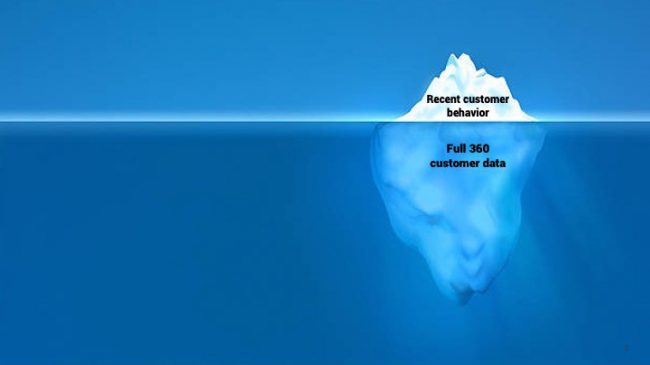First-party data will matter in a cookieless world


Catégorie : Data
Major news hit the world of online advertising about a year ago. Following Apple Safari & Mozilla Firefox, Google Chrome announced that third-party cookies would become obsolete by the end of 2021.
Knowing that Chrome and Safari alone account for more than 80% of web browsing, the impact of that change on digital advertising will be tremendous.
Similar to what happened when GDPR was introduced back in 2016, advertisers need to take this reality into account as soon as possible and start thinking of the consequences for their business.
I’d like to take you through a few steps to help you understand how this could be turned into an opportunity for your business.
We’ll go through:
In his blog post, Justin Schuh, Director of Chrome Engineering, argued that this decision is motivated by a desire to “make the web more private and secure for users, while also supporting publishers.”
Don’t panic: cookies won’t be banished all at once at the end of the year, but publishers will need to progressively phase out their use of third party cookies.
In effect, this phase out will likely strengthen the walled gardens of major players like Google and Apple, as well as Facebook, and Amazon in a more indirect way. They will all continue to log the browsing and purchasing behaviors of their users in their pervasive logged-in environment.
But third-party cookies technologies are resisting. They are reinventing how advertising platforms should work on an open Internet.
An example, led by The Trade Desk, with the support of Criteo, Nielsen, and LiveRamp, is the Unified ID 2.0 initiative that uses encrypted and hashed email addresses to create a standard identity replacement for third-party cookies.
How well will initiatives like Unified 2.0 manage identity resolution (match-rate)? How will competing companies manage to take their own interest aside in the long-run? Will user experience be negatively affected by constant opt-in pop-ups?
A lot of questions remain unanswered.
How should brands be reacting to the news? Well, my answer is simple: I think brands should leverage their own first-party data rather than trusting walled-gardens.
In a recent blog post, I talked about the data-action gap that all Marketing Clouds and CDPs struggle with.
Advertisers who don’t want to be 100% dependent on Google, Facebook, or Amazon must turn their first-party data into action.
Let me sum up the jist of my thinking.
Marketers are not — and should not be — taking the role of data scientists. They can’t leverage the full spectrum of their own customer dataset each time they need to build a customer segmentation and prepare for a campaign.
As a result, marketers only resort to the data that is easily and immediately accessible to them and use it in their day-to-day marketing.
Problem: this data only amounts for a tiny fraction of what is actually available for each customer.
Customer insights should not be limited to what you last bought or what you browsed in the last few days. Segmentation should leverage the entire data profile of customers.
Limiting first-party marketing to what your customers last saw on the website – remarketing tactics – is very repetitive in the long run, and rather bad for customer engagement. It is also limited in terms of customer reach, this time bad for your revenue.

I don’t think that the issue arises from a lack of data. Retailers have been collecting insightful customer attributes for years.
Gender, first name, zip code, email provider, purchase history, email logs… you name it.
This data is stored and mostly unused.
It is not a technology issue either.
Machine Learning techniques have made remarkable progress and are now able to crunch enormous amounts of data in seconds. Every marketer should be able to treat their data autonomously and tailor results to their daily needs.
To me, the real issue of today’s marketing is about marketer empowerment.
Marketers should have access to action-oriented solutions that allow them to do their job better, by leveraging the full-spectrum of the brand’s first-party dataset.
This is what Splio does.
Splio is an intuitive and collaborative tool that allows marketers to intelligently plan 90% of their customer marketing messages.
This 90% covers all the painful commercial challenges that marketers face on a daily basis: sales below forecasts, product launches, overstock….
In other words, all the marketing messages that do not react to a recent customer behavior. You probably already have triggers in place for those.
In a nutshell, Splio identifies the opportunities that marketers would have left on the table, it builds the best customer audiences without any reach limitation, and adds value-driven decisioning capabilities.
Its algorithm is powered by anonymized first-party data: CRM database, online and offline purchases, and marketing logs.
It also conveniently connects to all the major Marketing Clouds & CDPs.
Segmentation based on first-party data is traditionally used for owned marketing channels, like email campaigns, direct mail or SMS.
However, observing the usage of Splio’ clients, two additional channels seem to be getting steam: push notifications and display campaigns.
In the case of web and in-app push notifications, I advise you to read this blog post we published recently on the topic.
In the case of display campaigns, your first-party data can complement the targeting done by major advertising platforms, making for a better segmentation overall.
To execute CRM display campaigns, brands import hashed email addresses to Facebook Custom Audience, Google Customer Match, or Criteo Audience Match. These networks then match these hashed email addresses with their own first-party cookies.
Match-rate may range from 30% to 80%.
After matching is done, setting up display campaigns is pretty straightforward and remains the same as what you’re used to doing for acquisition.
CRM display campaigns can be used for a range of cases, such as:
Facebook and Google sure provide Interests or RFM segmentation to help brands with their CRM display campaigns.
But their targeting is broad and unable to provide laser-focused customer segmentation to advertisers.
On the contrary, leveraging online and offline purchases, open rates and clicks of newsletters, or anonymized sociodemographic information allows Splio to understand the latent features present within the first-party data set of every brand.
Splio dynamically segments their customer database according to the propensity of their clients to buy a certain product.
Buying Nike or Gucci sneakers happens for different reasons. Umbrella segmentations such as lifestyle or fashion, do not reflect specific customer buying patterns.
Therefore, adding in the extra layer made available by a thorough analysis of your first-party data can strongly complement the basic level targeting done by Facebook, Google, and all the other major players.
By going beyond broad interest, lookalike audiences and past-purchase patterns, Splio massively improves the performance of customer-matched display campaigns: higher conversion rates, reduced cost-per-sales…
Leveraging the non-explicit information shared between a brand and its clients is the key to matching demanding customer expectations with optimized marketing budgets.
Non-explicit information allows for closer customer relationships and for what we could call a heightened commercial sense.
Because in the end, this is what it is truly about: improving retention by knowing your customers inside out and making them feel truly unique.
This is the winning bet for an optimal use of everything you know about your customers.